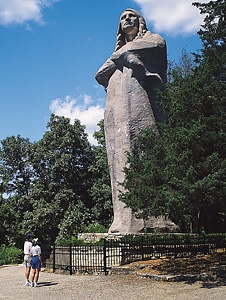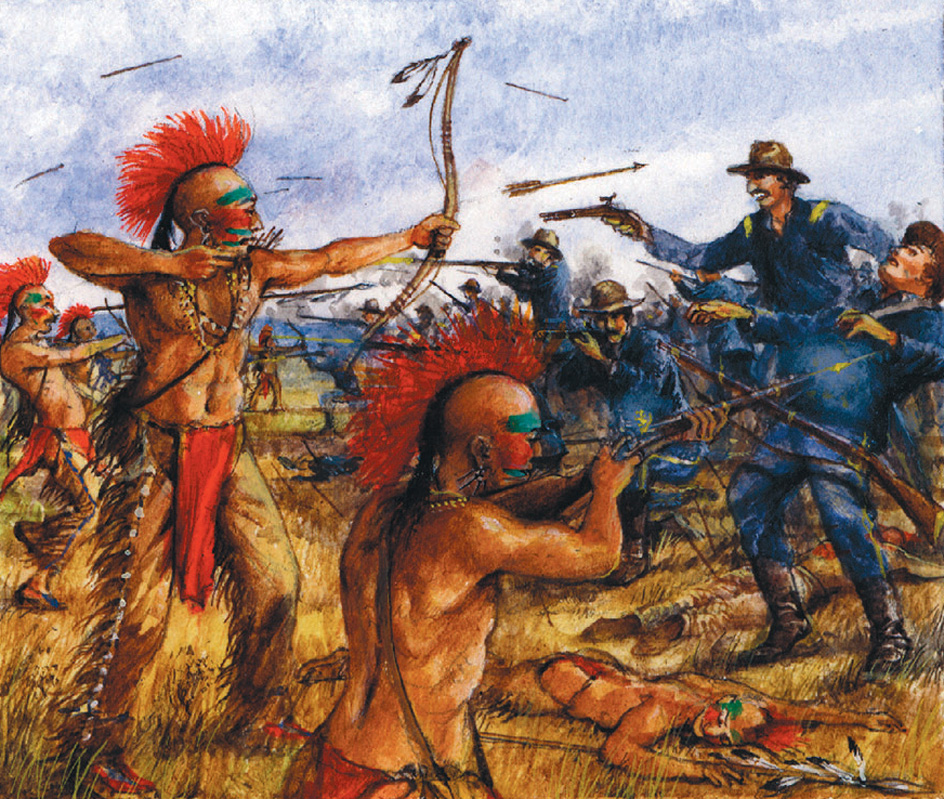Black Hawk (1767-1838) was a Native American leader of the Sauk people. He was noted for his struggle against the westward movement of the white settlers in Illinois .

Black Hawk was born near the mouth of the Rock River in Illinois. He became a military leader in wars against the Osage people and the United States . In 1804, some Sauk and Fox leaders signed a treaty that ceded to the United States their’ lands east of the Mississippi River . The treaty, however, left unclear exactly when the Native Americans had to leave these lands. Black Hawk refused to accept the treaty. He declared that the chiefs had been given intoxicating liquors before they signed the documents.
During the War of 1812 , Black Hawk and about 500 of his warriors joined the British for a time. By 1830, most of the Sauk and Fox, led by Keokuk, had moved to a reservation west of the Mississippi River. In 1831, Black Hawk’s band was forced to join them. But in 1832, he returned with his followers and was defeated in a conflict known as the Black Hawk War . Soon afterward, Black Hawk told his story to a French-American interpreter. The account was published as Life of Ma-ka-tai-me-she-kia-kiak, or Black Hawk (1833).

Black Hawk died on a reservation near Des Moines on Oct. 3, 1838. His body was placed in a small shelter in Sauk fashion. Later his bones were removed to the Historical Society Building in Burlington, Iowa. Here they were lost in a fire that destroyed the structure. A 50-foot (15-meter) statue of Black Hawk by American sculptor Lorado Taft stands beside the Rock River near Oregon, Illinois.
